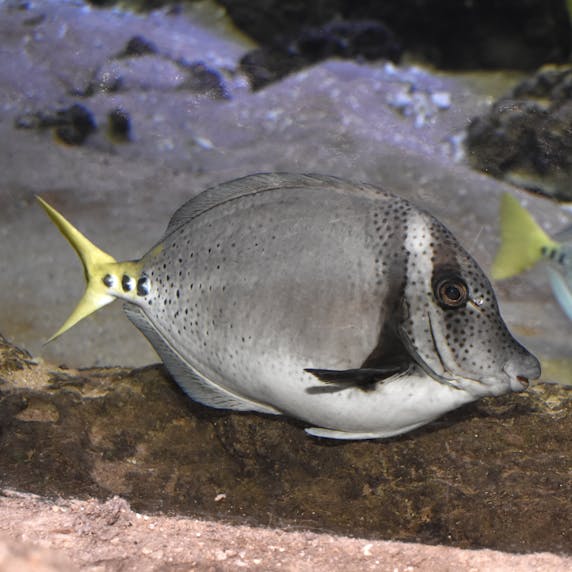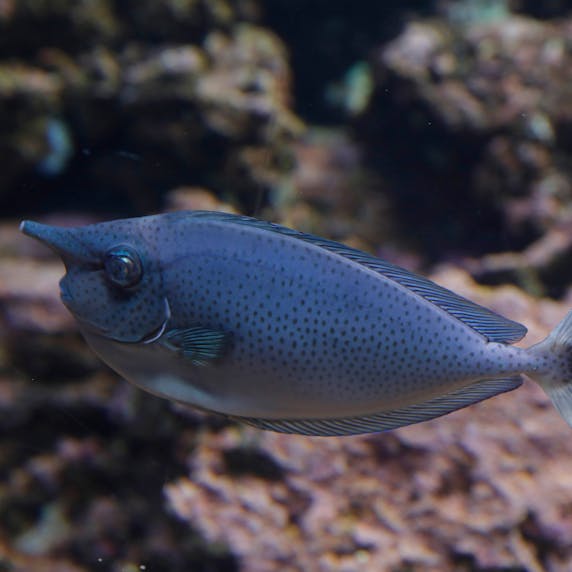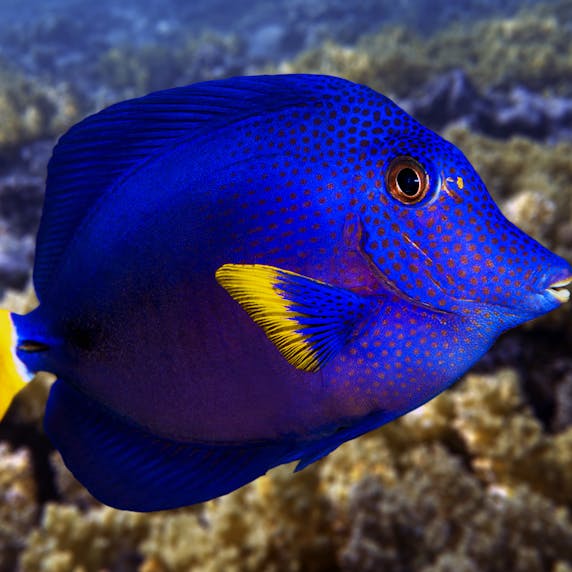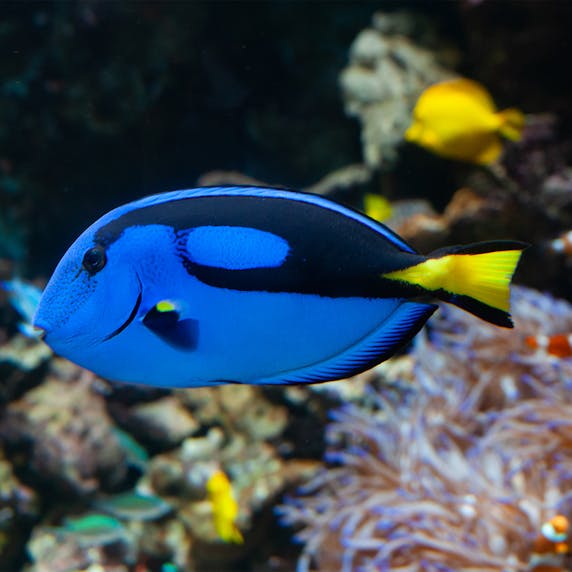
Surgeonfish are a diverse group that give colour to coral reefs worldwide. Yet we still know relatively little about the reproduction of this family. This makes it difficult to breed these animals in aquariums. The researchers at RoffaReefs, a programme from Rotterdam Zoo, are therefore researching the development of young surgeonfish and other reef fish. In this way, they hope to make an important contribution to the population of surgeonfish both in aquaria and in the wild.
Acanthuridae

Up to 30 years, depending on the species
7 – 50 centimetres
15 – 100 centimetres
100 – 2500 grams
There are around 86 different species of surgeonfish, with a wide variety of colours and shapes. But they all have a pair of bony protrusions on the sides of their tail, just in front of the tail fin. These protrusions are shaped like a scalpel, hence the name “surgeonfish”. Some species also have a distinctive bump or “horn” on their forehead. Its function is not yet entirely clear.
Various species of surgeonfish can be seen at Rotterdam Zoo: the palette surgeonfish, yellowtail tang, Tomini surgeonfish, Cortez surgeonfish, spotted unicornfish and the bignose unicornfish.
Surgeonfish are found in all tropical coastal waters around the world, from the Caribbean to the African coast and the Great Barrier Reef in Australia. There they live mainly among coral reefs, where their bright colours do not make them too conspicuous. Many species reproduce in mangrove forests or seagrass beds, some in more open water.

Surgeonfish are true grazers. Most species have spatula-shaped teeth with sharp, serrated edges. They use these to scrape algae off the coral reef, preventing the algae from overgrowing the reef. This is important because tropical corals need sunlight to survive. Algae eaters such as surgeonfish are therefore actually the “gardeners” of the coral reef: they take care of the reef and ensure that the corals continue to grow well.
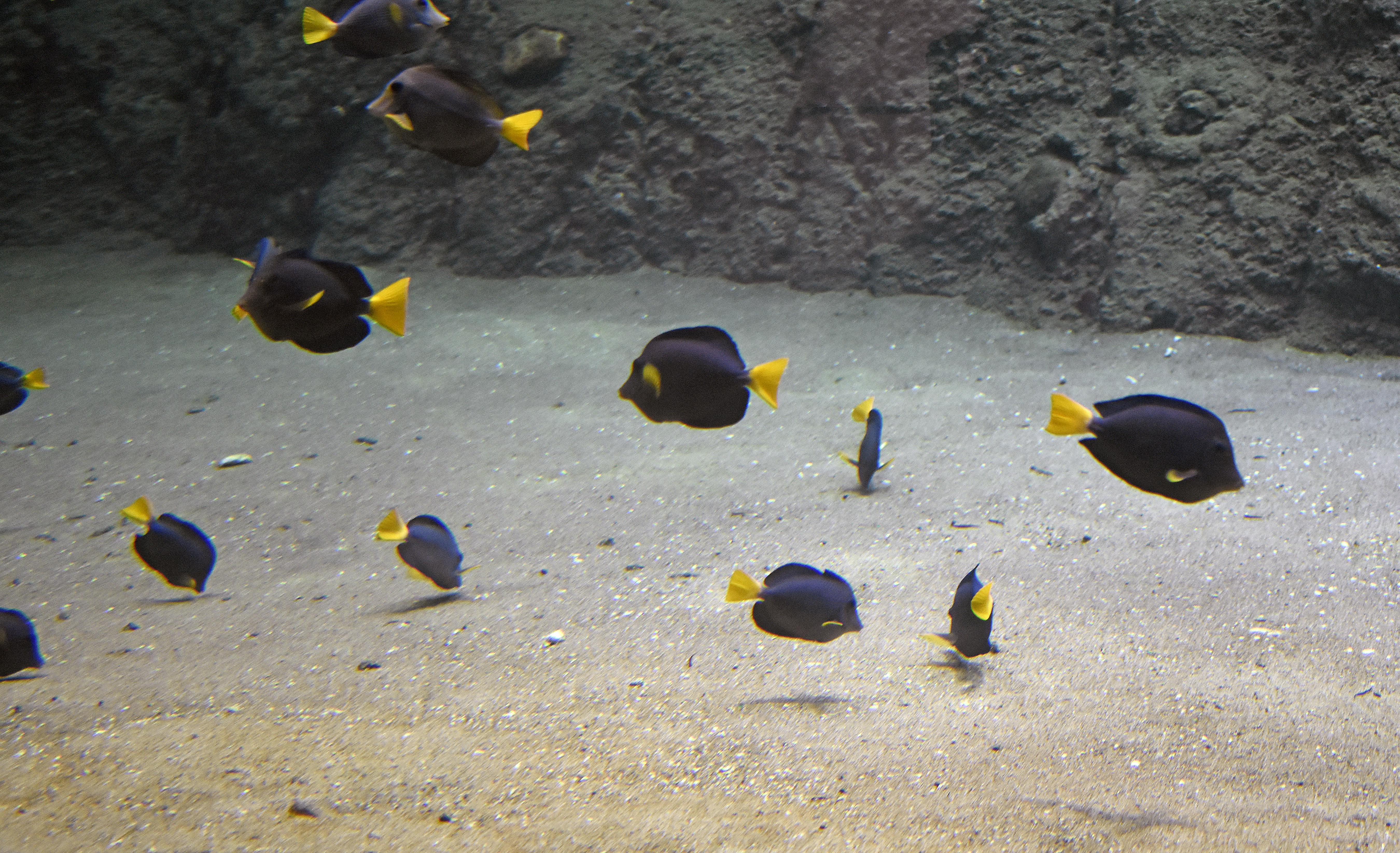
Depending on the species, surgeonfish swim in pairs or in larger harem groups. A male surgeonfish with a harem protects his territory and his females well. To do this, he uses the scalpel-shaped protrusions near his tail as dangerous weapons. In addition, the scalpel changes colour as a warning to males who come too close.
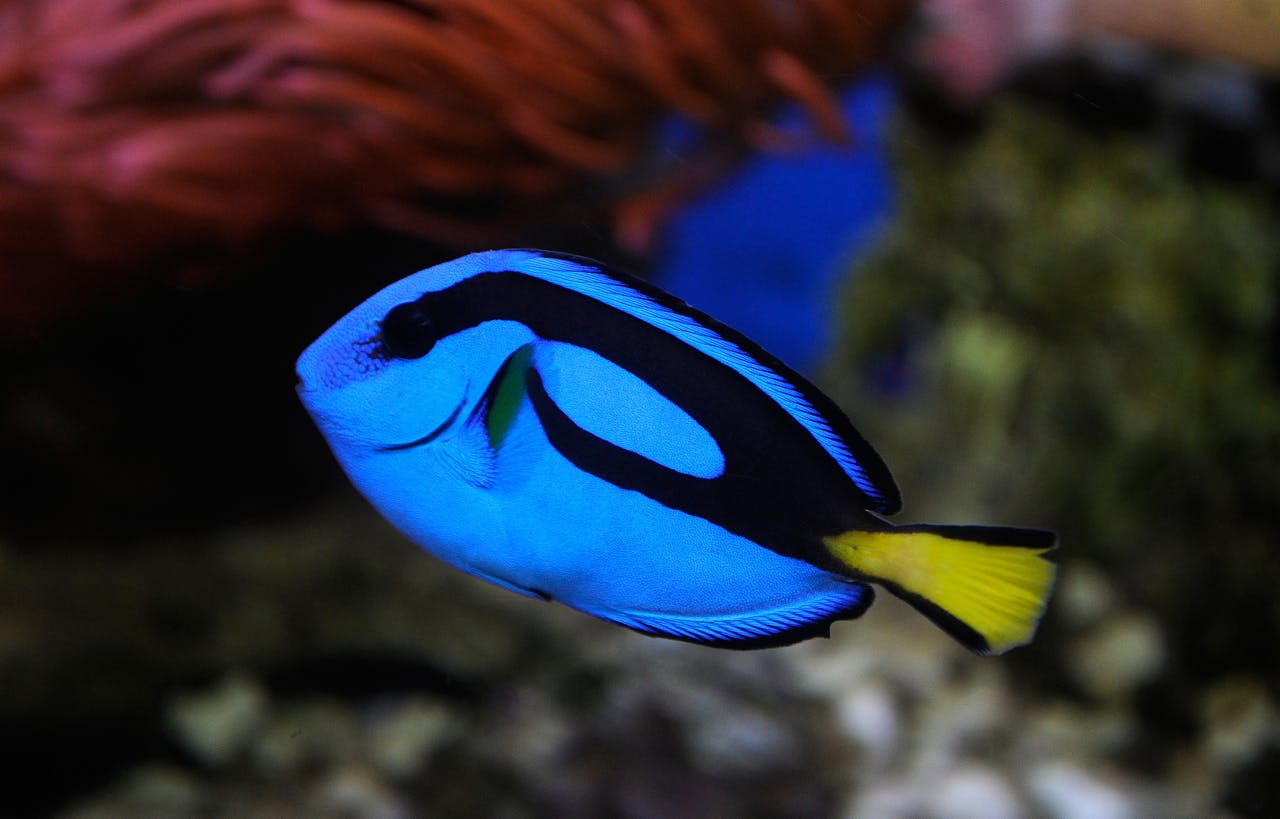
Surgeonfish reproduce externally. This means that females release their eggs and males release their sperm into the water, where they come together outside the fish. This form of fertilisation is also known as spawning and occurs in most bony fish (fish with a skeleton made of bone).
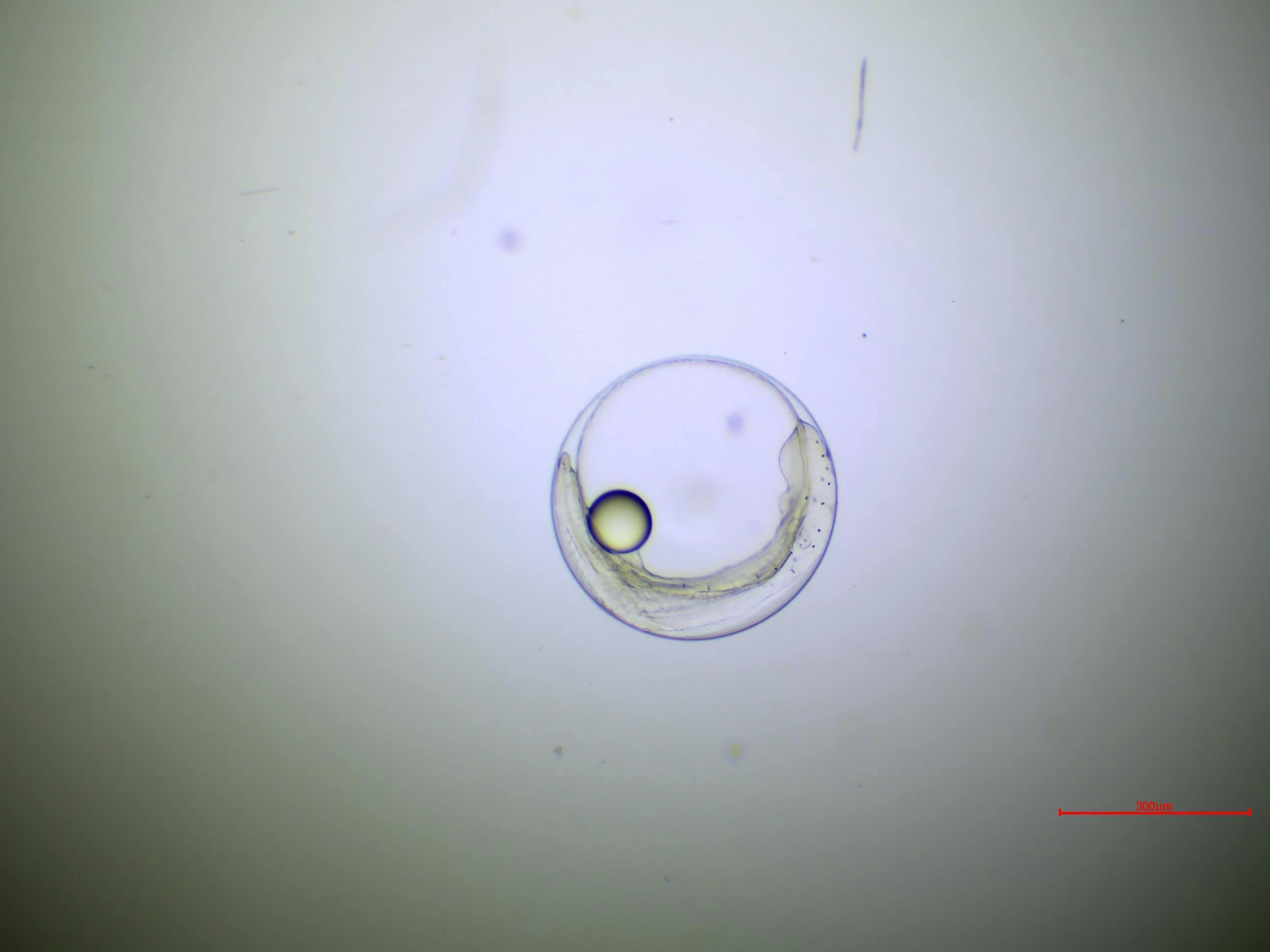
For many fish species, it is still completely unknown how the larvae develop into adult fish. But the researchers at RoffaReefs are trying to find out. They study fish eggs under the microscope and are even training an artificial intelligence programme (the A-EI) to recognise large quantities of eggs. Hopefully, this will teach us much more about the development of surgeonfish and other important species.
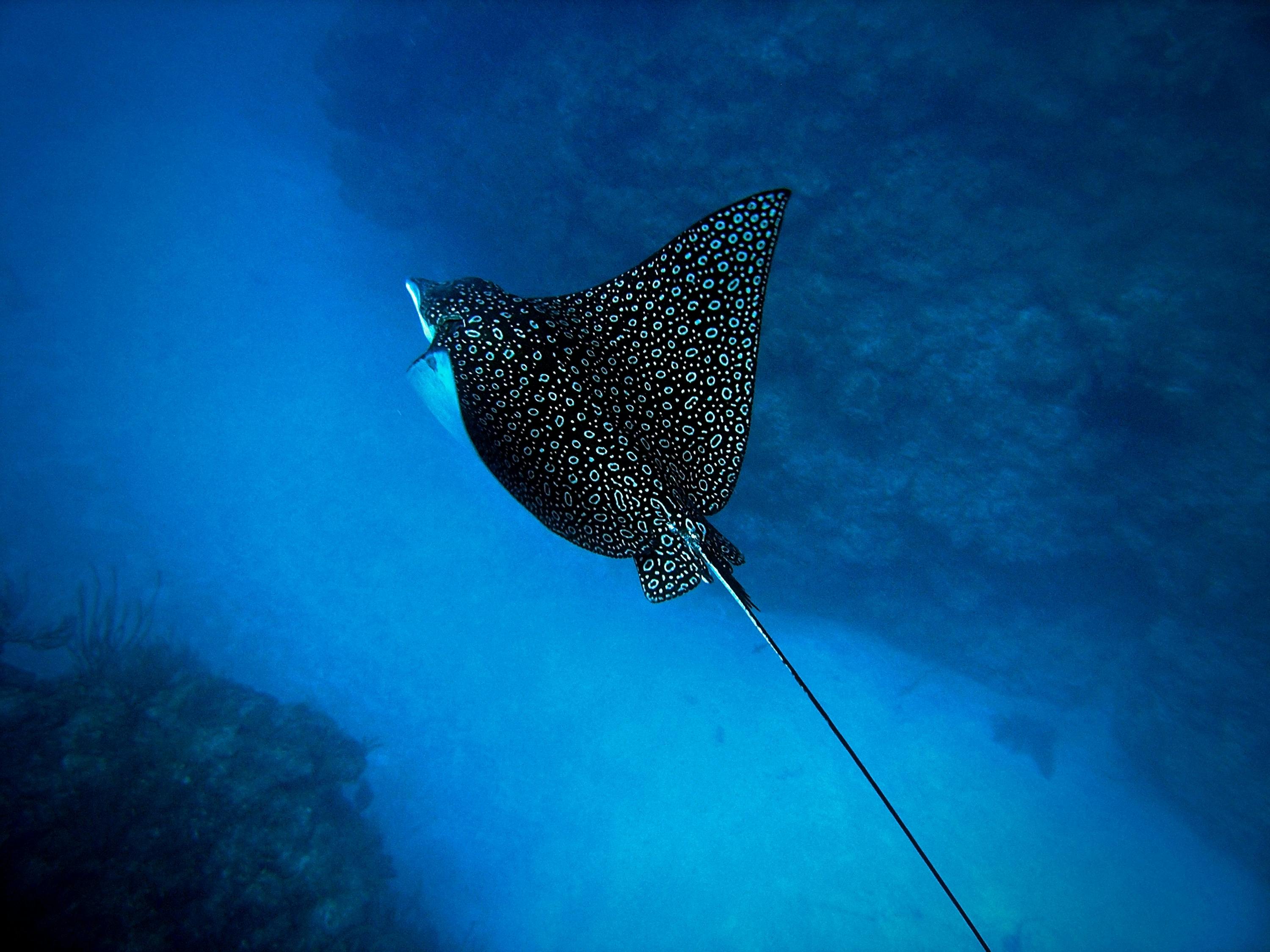
Surgeonfish are on the menu of sharks, rays and other large predatory fish, such as tuna. They have also been popular in fishing since ancient times.
To defend themselves against predatory fish, surgeonfish use their scalpels. These are sharp enough to keep smaller attackers at bay.

According to the IUCN (the International Union for Conservation of Nature), most species of surgeonfish are “Least Concern”. In some cases, no assessment has yet been made or there is insufficient data to determine a threat level.
However, we are seeing that the coral reefs and mangrove forests where surgeonfish live are rapidly disappearing. This is partly due to high levels of CO2 in the air, which is absorbed by the sea. The seawater is warming up and becoming more acidic, causing the corals to bleach. If this continues, the surgeonfish will eventually disappear too.
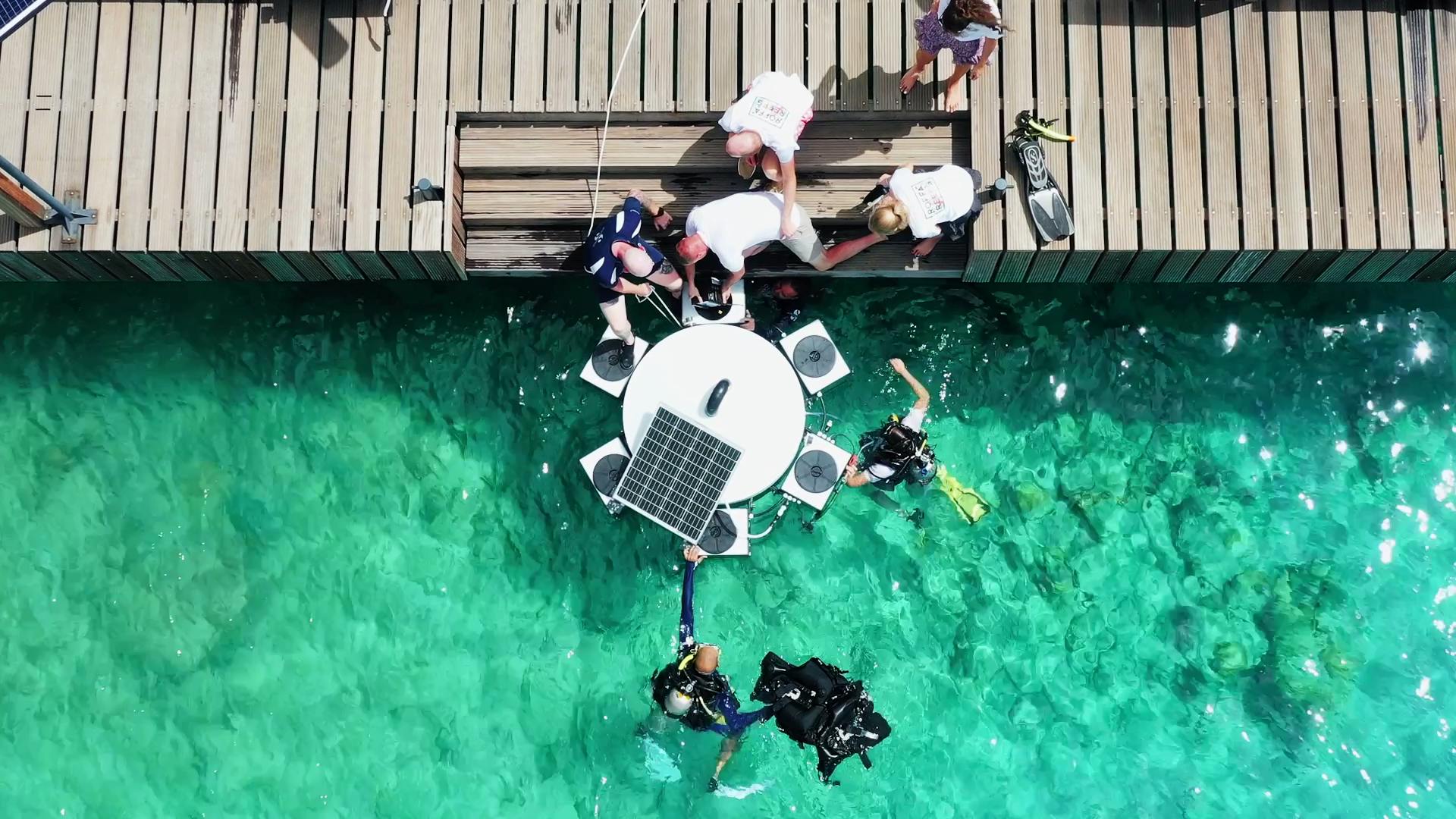
To better understand how surgeonfish reproduce, researchers at RoffaReefs are developing a fish breeding system. In this floating system, fish eggs hatch safely and larvae grow, allowing researchers to study the growth of the fish. They are testing this system in the coral reefs around Bonaire. They are trying to find out when the fish reproduce and how the eggs develop into young fish. In this way, they hope to keep the wild population of reef fish, such as surgeonfish, healthy. This also indirectly keeps the coral reef healthy!
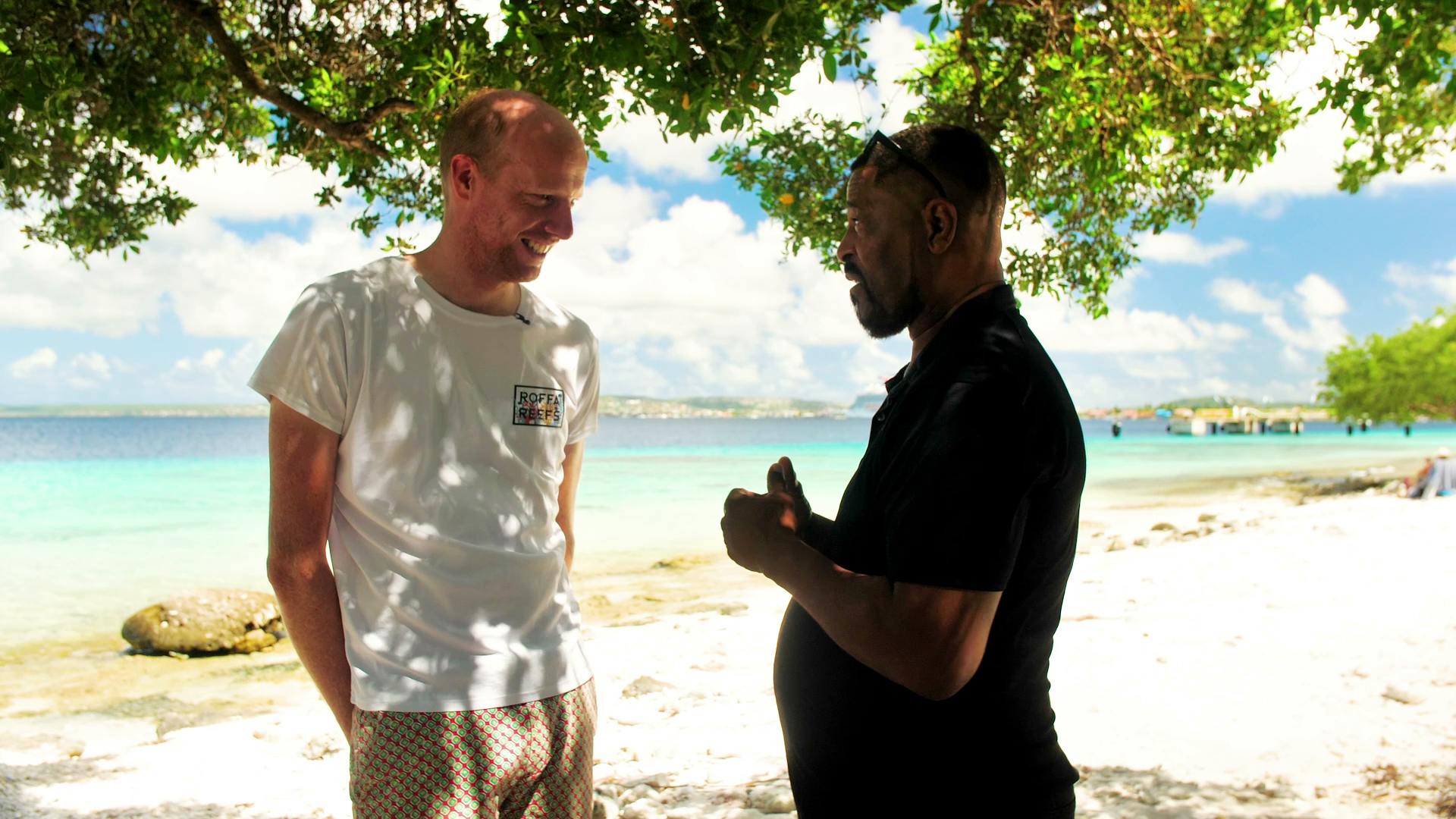
In order to effectively protect the fish and reefs around Bonaire, RoffaReefs works closely with the fishermen's association Piskabon. After all, Bonairean fishermen have a wealth of valuable knowledge about their reef, and their support is crucial to successful nature conservation policy. In consultation with them, RoffaReefs is attempting to compile a fishing calendar that indicates when each fish species reproduces. This allows fishermen to know when it is best not to fish for a particular species, so that it can recover and both fish and fishing can continue to thrive.

Fish in aquariums are often fed fish food containing fishmeal. Fishmeal consists of parts of fish that are not used for human consumption. For algae eaters, such as surgeonfish, this does not correspond to their natural diet. In addition, algae do not float around in the water, like most fish food, but grow on coral reefs. To offer fish in aquariums a more natural food source, RoffaReefs developed a feeding rack with vegan fish food. Now the surgeonfish at Rotterdam Zoo can really graze from the 3D-printed feeding racks!
